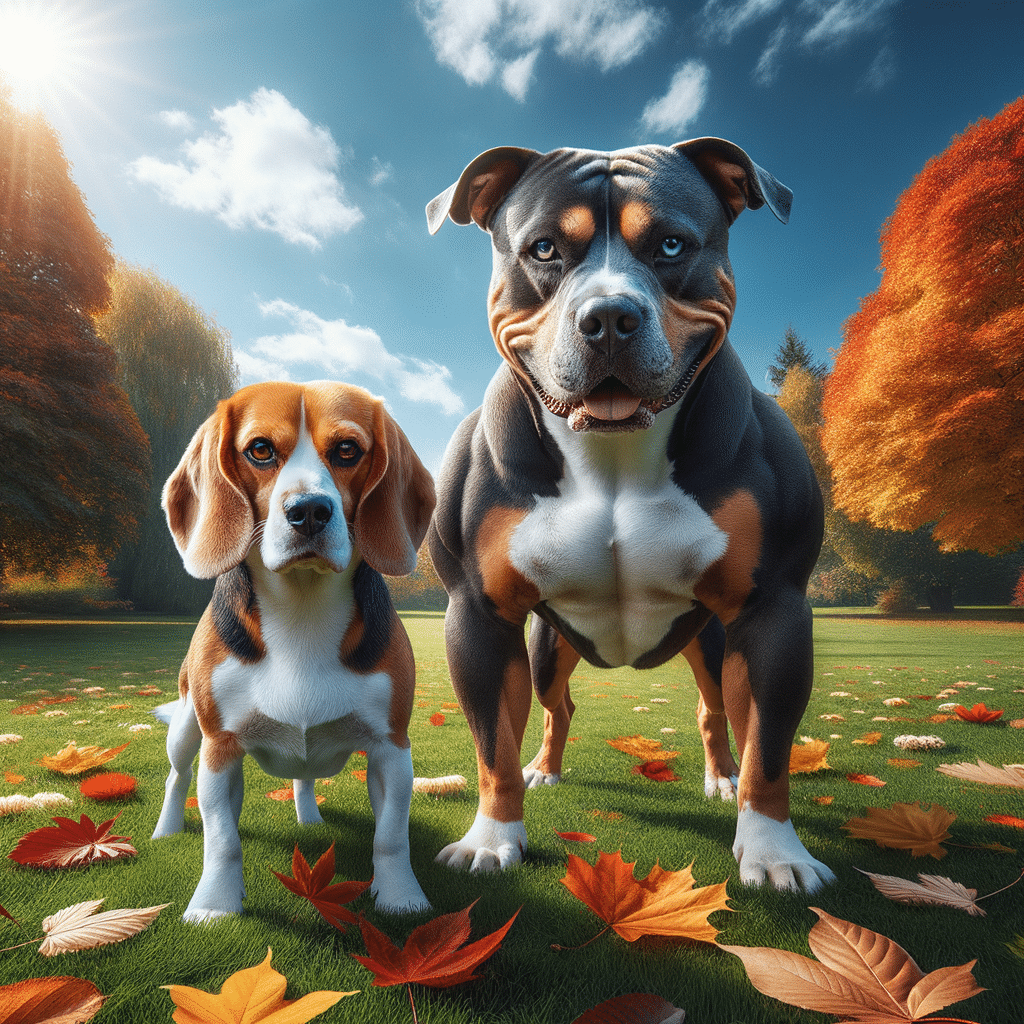Many dog enthusiasts seek a calm and low-energy companion, a pet that matches a more relaxed lifestyle. While some dogs are known for their inexhaustible energy and need for constant activity, there are dog breeds that epitomize the opposite, often labeled as ‘lazy dogs.’
In This Article
These breeds naturally favor rest over exercise and are perfect for owners who prefer leisurely living. Differences in energy levels among dog breeds can be substantial; therefore, identifying those typically less active is beneficial for potential pet owners with specific living situations or time constraints.
Understanding the characteristics of lazy dog breeds is important when adding a canine companion to your home. Lazy dog breeds often require less exercise and can be happy in smaller living spaces like apartments.
Lazy does not mean these dogs don’t require regular exercise and care. Even lower-energy dogs need some form of daily activity and mental stimulation to stay healthy and happy. Choosing the right lazy breed means considering the dog’s size, grooming needs, and overall temperament to ensure a good fit with your lifestyle.
Highlights
- Lazy dog breeds are ideal for low-energy lifestyles and less demanding in terms of exercise.
- Regular activity and care are still essential for less active dogs.
- Properly matching a dog's temperament and care requirements with an owner's lifestyle is vital when choosing a lazy breed.
Characteristics of Lazy Dog Breeds
Lazy dog breeds often display distinct physical and behavioral characteristics that set them apart. They typically require less regular exercise and are content with a more sedentary lifestyle. However, they still need certain activities to remain happy and healthy.
Physical Attributes That Contribute to “Laziness”
Physical traits of lazy dogs often include brachycephalic qualities, like the short, pushed-in nose of the English bulldog. This anatomical feature can lead to breathing difficulties, especially during exercise, which naturally limits their activity levels. Heavier-set lazy dogs, such as the basset hound with stout bodies and short legs, tend to move less and enjoy lounging more due to the strain that extra weight can put on their joints.
Behavioral Traits of Low-Energy Dogs
Low-energy dogs display a temperament that favors relaxation over activity. They prefer long naps over playing fetch, and they’re typically happy with a few leisurely walks each day rather than vigorous exercise. Unlike their high-energy counterparts, they generally do not require extensive playtime to use up excess energy. This laid-back behavior makes them ideal for owners who prefer a more tranquil living environment.
Popular Lazy Dog Breeds
Choosing the laziest dog that matches your energy level is essential. For those who prefer a less active canine companion, several breeds are naturally lower in energy. Whether you live in a small space or want a dog that’s more prone to lounging than sprinting, there’s a lazy breed that will fit your lifestyle.
Small Lazy Dog Breeds
Shih Tzus and Pekingese are prime small dog breeds that enjoy a more relaxed lifestyle. They cherish comfortable laps and short walks rather than vigorous exercise. Cavalier King Charles spaniels also fit into this category, combining their love for comfort with an equally affectionate disposition.
- Shih Tzu: A compact companion, content with short play sessions.
- Pekingese: A regal dog with a preference for leisure over long walks.
- Cavalier King Charles spaniel: This breed values cuddles as much as playtime.
Other small breeds that tend to be low-key include:
- Bulldogs: known for their laid-back attitude and are often happy to relax by their owner's side.
- Basset hound: With short legs and a long body, they're more predisposed to lounging than leaping.
- Pugs: Spirited yet often prefer the comforts of indoor living.
Large Lazy Dog Breeds
On the larger side, breeds like the mastiff and Saint Bernard are gentle giants that often prefer rest over vigorous activity. Great Danes may stand tall, but don’t let their size fool you. They are often called ‘gentle giants’ due to their peaceful nature.
- Mastiff: A massive breed with an equally impressive desire for downtime.
- Saint Bernard: Despite their size, they are known for having a calm demeanor and enjoying relaxation.
- Great Dane: Another large breed that often enjoys spending their day lounging.
Large breeds that also enjoy a laid-back lifestyle include:
- Newfoundland: This breed enjoys a good swim but is known for their love of napping.
- Bernese Mountain Dogs: They thrive in cooler climates, and although they need regular exercise, they also enjoy their relaxation time.
- Greyhounds: Surprisingly, despite their racing background, they are often couch potatoes at home.
Whether small or large, these breeds are known for their tendency to enjoy a slower-paced life. While every dog has a unique personality, these breeds often present a suitable option for potential dog owners seeking a more relaxed companion.
Caring for a Lazy Dog
Even though some dog breeds have a reputation for being less active, they still require proper dog care to ensure they remain healthy and happy. Owners must balance their pet’s laid-back lifestyle with essential daily activity and be aware of health issues that can arise from a sedentary life.
Daily Exercise and Activity Needs
Regardless of a lap dog’s energy level, daily walks and regular exercise are non-negotiable for maintaining physical and mental well-being.
- Daily walks: A leisurely walk for at least 20-30 minutes can help to keep a lazy dog engaged and fit.
- Interactive play: Even less active breeds benefit from short play sessions, including games like hide-and-seek or gentle tug-of-war.
Indoor activities are also valuable, from puzzle toys stimulating their minds to short indoor fetch sessions. Keeping a routine is important. Even if the activity levels are lower, consistency helps maintain structure and prevents behavioral issues.
Health Considerations for Less Active Breeds
A low-energy dog’s activity level can be associated with certain health risks, particularly if they become overweight due to excessive calorie intake and insufficient exercise.
- Diet management: Monitor their food intake closely to align with their less active lifestyle, and consider weight management formulas if necessary.
- Regular check-ups: Routine veterinary visits are crucial to detect any weight-related issues early, such as diabetes or joint stress.
- Joint care: Less active dogs, especially larger breeds, may be more vulnerable to joint issues like hip dysplasia. Supplementation and comfy bedding can support joint health.
Preventive measures are essential to keep lethargic breeds healthy. Owners should be attentive and proactive in managing their less active dog’s daily needs, from structured exercise to dietary considerations.
Choosing the Right Lazy Dog for You
When looking for a low-energy canine companion, potential dog owners should carefully evaluate their lifestyle and the needs of different lazy dog breeds. A well-suited breed brings joy and relaxation to a household.
Considerations for Potential Owners
Before bringing a lazy dog breed into one’s life, a prospective owner should assess several factors to ensure a good match:
- Living space: Large breeds like the English Bulldog may be content in smaller spaces due to their low energy levels, but they still need room to move comfortably.
- Health needs: Some breeds, especially those with the brachycephalic feature, such as French Bulldogs, may have specific health requirements and may incur higher veterinary costs.
- Exercise: Even low-energy dogs require regular exercise to maintain good health. Greyhounds, for example, are known as couch potatoes but need short bursts of exercise to stay fit.
- Temperament: Understanding a breed's temperament is critical; for instance, Basset Hounds are typically laid-back and excellent at adapting to a relaxed home environment.
- Size and weight: Smaller breeds like the French Bulldog are easier to manage and are a good fit for those unable to handle larger, lazy breeds.
- American Kennel Club (AKC) standards: The AKC provides information on breed standards and care, offering guidance on what to expect from each breed regarding behavior and maintenance.
Adoption and Rescue Opportunities
Adopting a lazy dog breed can be a fulfilling way to bring a new pet into one’s home. Here are some tips for those considering this route.
- Senior rescues: Older dogs are typically less energetic, and adopting a senior can be a rewarding experience, with many rescue organizations focusing on senior dog adoption.
- Breed-specific rescues: These organizations deeply understand the breeds they work with and can advise on how a particular breed may fit into your lifestyle.
- Local shelters: Pay attention to mixed breeds at local shelters. Many have the characteristics of low-energy dogs and need loving homes.
- Research: Use resources like the AKC to identify breeds and seek out breed-specific rescue groups or shelters with dogs available for adoption.
Frequently Asked Questions
When choosing a dog breed, potential pet owners often have specific questions about energy levels, which can significantly affect lifestyle compatibility. This section addresses common inquiries regarding dog breeds known for their more laid-back temperament.
Which large dog breeds exhibit the lowest levels of energy?
Large dog breeds with lower energy levels include the Great Dane, Mastiff, and Newfoundland. These breeds often enjoy lounging and do not require extensive exercise, making them suitable for a more relaxed lifestyle.
What are the top couch potato dog breeds recognized by the AKC?
The American Kennel Club (AKC) recognizes breeds like the Bulldog, Basset Hound, and Cavalier King Charles Spaniel as breeds that prefer a more sedentary life. These breeds are often content with short walks and ample rest time.
Which small dogs are known for their particularly relaxed disposition?
Small dogs with a relaxed disposition include the Shih Tzu and the Pekingese. These breeds are known for enjoying comfortable indoor environments and being very affectionate with their owners.
What are some suitable dog breeds for first-time owners looking for a low-energy companion?
First-time owners looking for low-energy dogs might find breeds like the Bullmastiff, Bernese Mountain Dog, and English Bulldog ideal. These breeds are generally good-natured, and their more manageable energy levels make them excellent starter pets.
Can you suggest some lazy dog breeds that are also hypoallergenic?
For those with allergies, hypoallergenic breeds known for being low-energy include the Bichon Frise and the Maltese. These dogs have coats that are less likely to trigger allergies and typically enjoy a laid-back lifestyle.
What breeds of medium-sized dogs are considered to have low energy levels?
Medium-sized dogs, including the Chow Chow and the Whippet, often have lower energy levels. Despite the Whippet’s sighthound heritage, it is known to appreciate lounging as much as it does a quick sprint.






